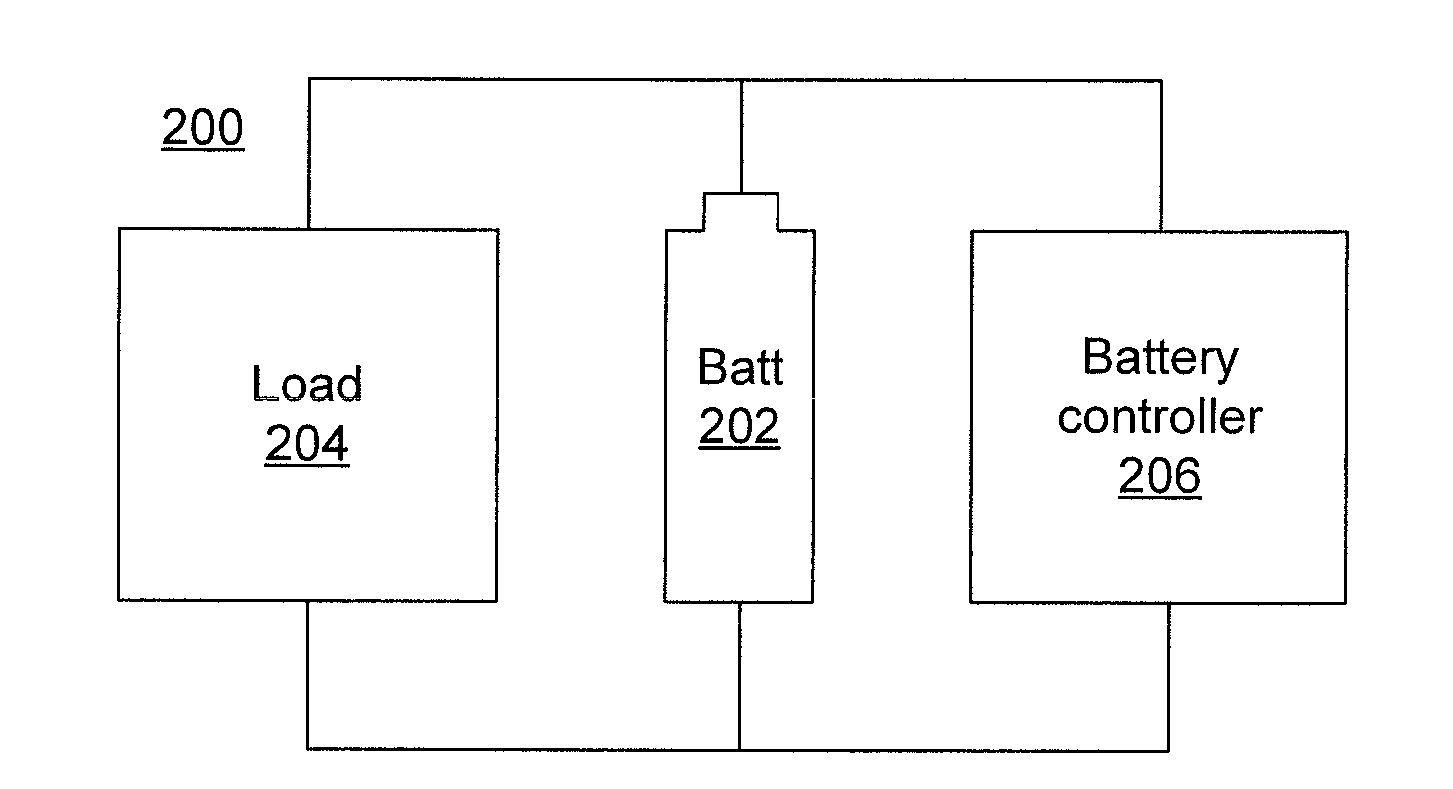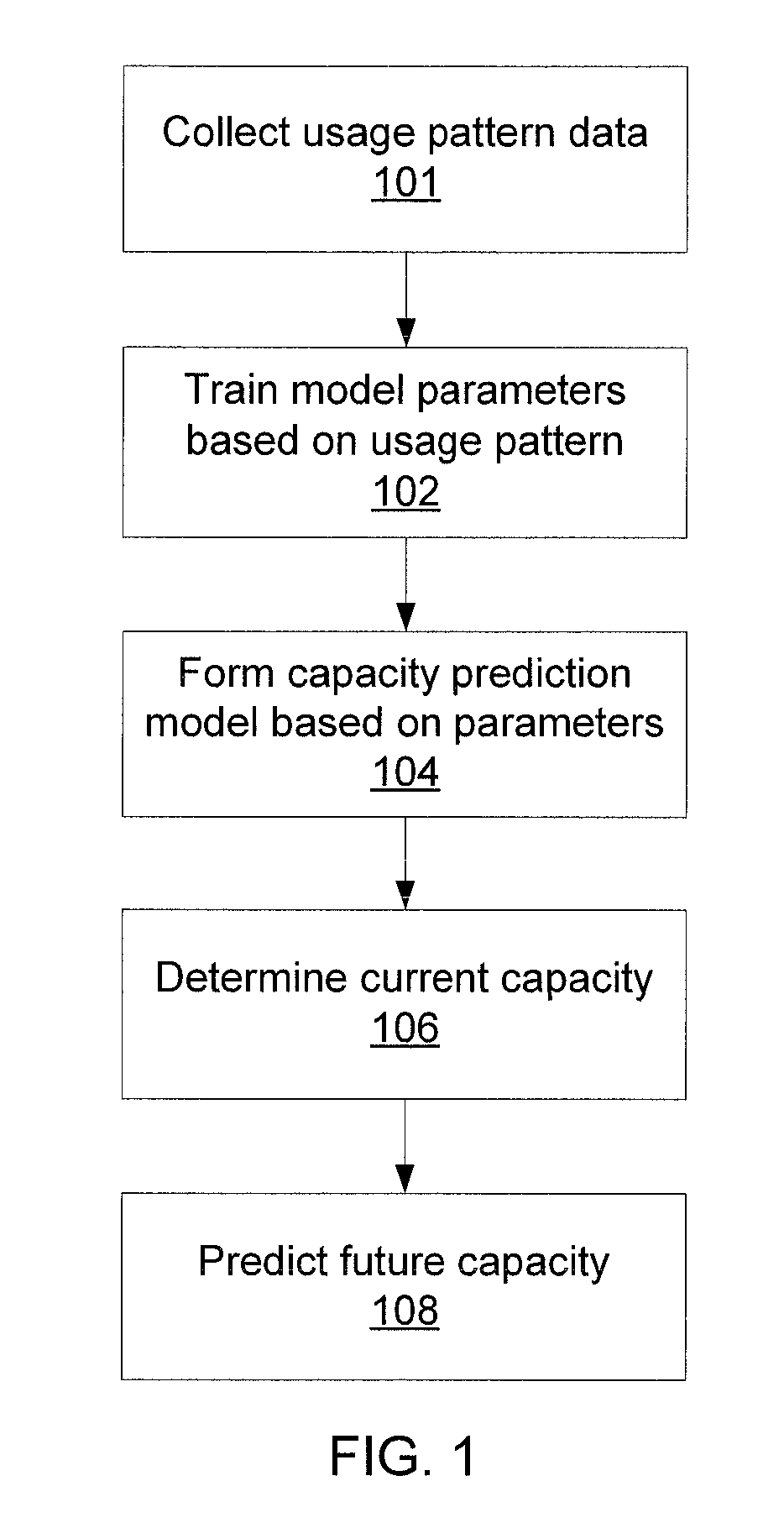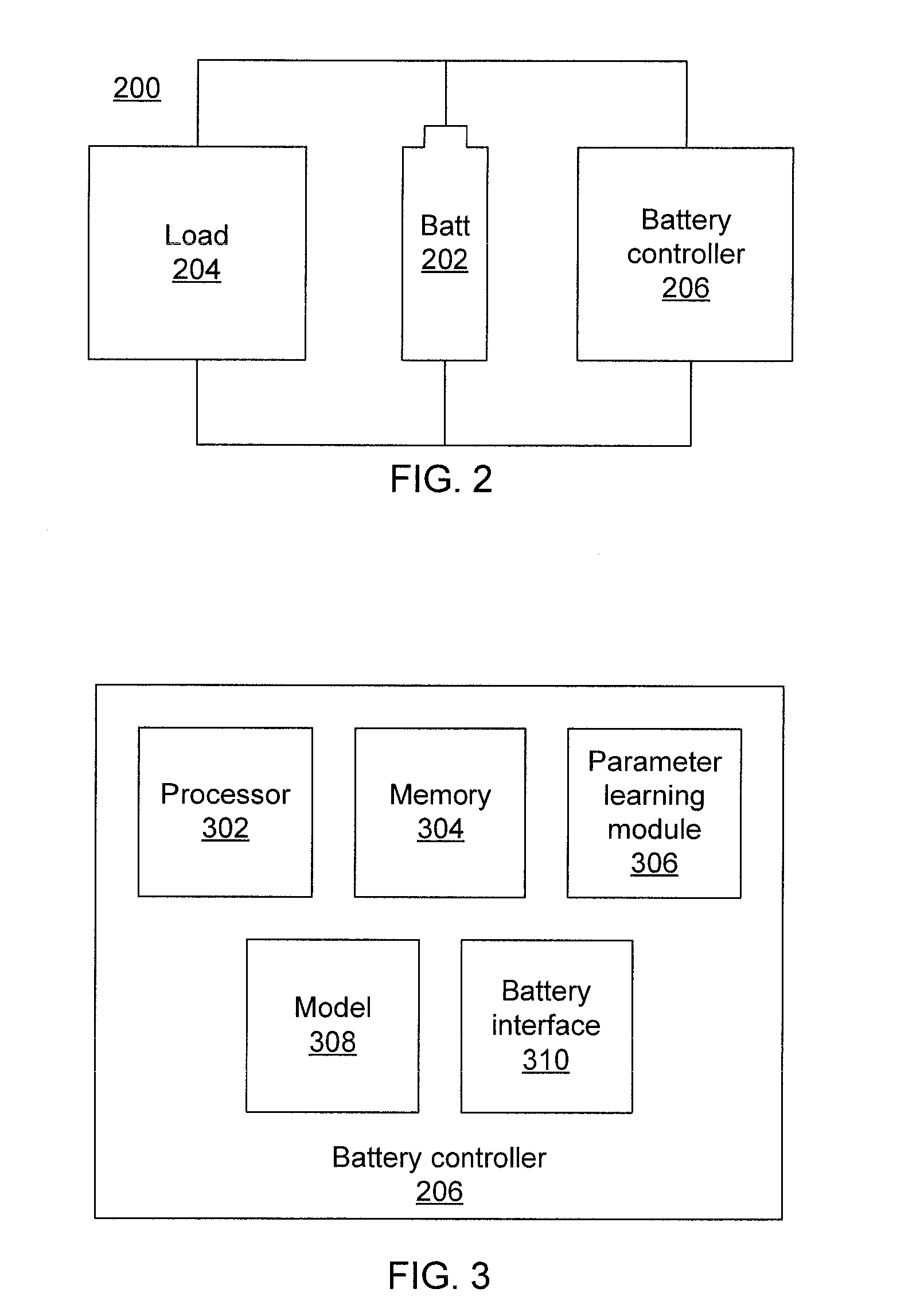Modeling a change in battery degradation
a battery and change technology, applied in the field of battery degradation, can solve the problems of battery degradation, insufficient square root law model for high-precision analysis of battery capacity retention rate, and degraded battery life through use, and achieve the effect of prolonging the battery's usable lifetim
- Summary
- Abstract
- Description
- Claims
- Application Information
AI Technical Summary
Benefits of technology
Problems solved by technology
Method used
Image
Examples
Embodiment Construction
[0014]Embodiments of the present invention provide predictions of battery lifetime that are based on a balance of self-discharge rates and residual amounts of lithium ions. As noted above, the battery capacity of a lithium ion battery is time-dependent, with the formation of a solid-electrolyte interphase (SEI) layer at the anode of the battery decreasing the number of available lithium ions in a battery, but at the same time inhibiting self-discharge of the battery, which would otherwise lead to the battery draining more quickly. As a result, a balance between these two factors is needed to accurately predict the capacity retention rate and lifetime of the battery, taking into account both the early advantageous effects of the SEI layer formation as well as the long-term degradation of the battery capacity.
[0015]To accomplish this, a model is employed using a recursive function that captures the present state of the battery's capacity retention rate. Thus, the capacity retention ra...
PUM
 Login to View More
Login to View More Abstract
Description
Claims
Application Information
 Login to View More
Login to View More - R&D
- Intellectual Property
- Life Sciences
- Materials
- Tech Scout
- Unparalleled Data Quality
- Higher Quality Content
- 60% Fewer Hallucinations
Browse by: Latest US Patents, China's latest patents, Technical Efficacy Thesaurus, Application Domain, Technology Topic, Popular Technical Reports.
© 2025 PatSnap. All rights reserved.Legal|Privacy policy|Modern Slavery Act Transparency Statement|Sitemap|About US| Contact US: help@patsnap.com



